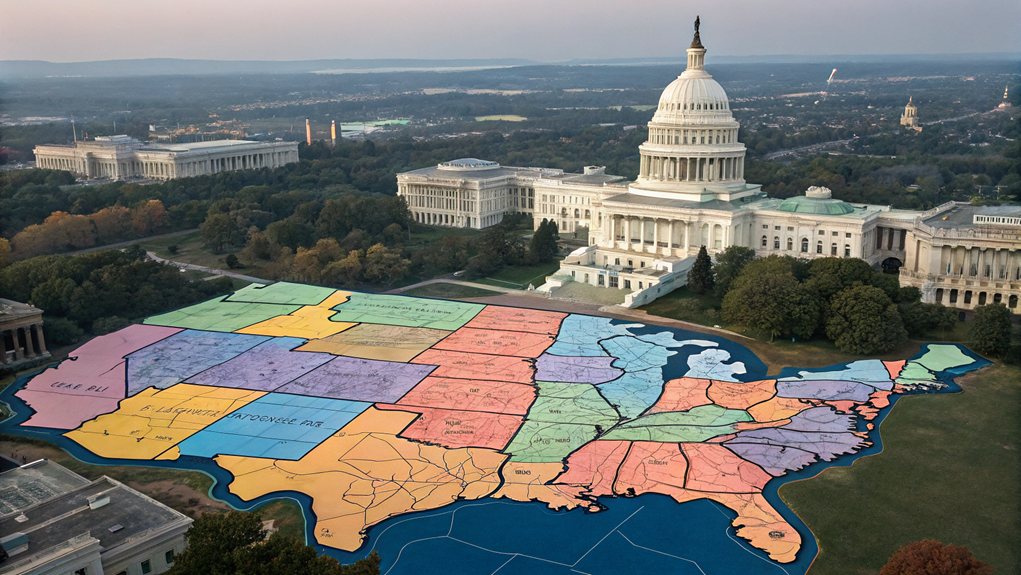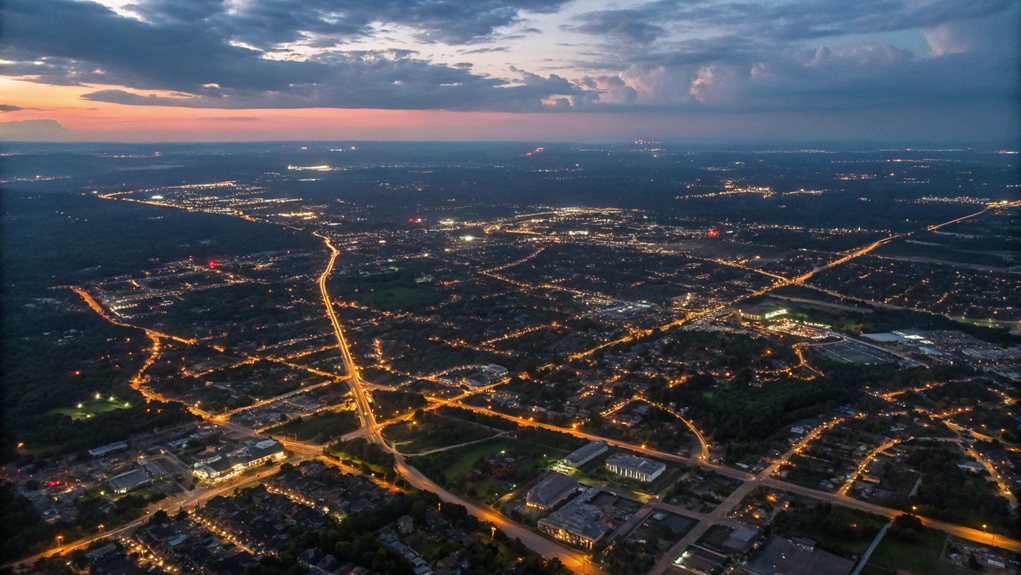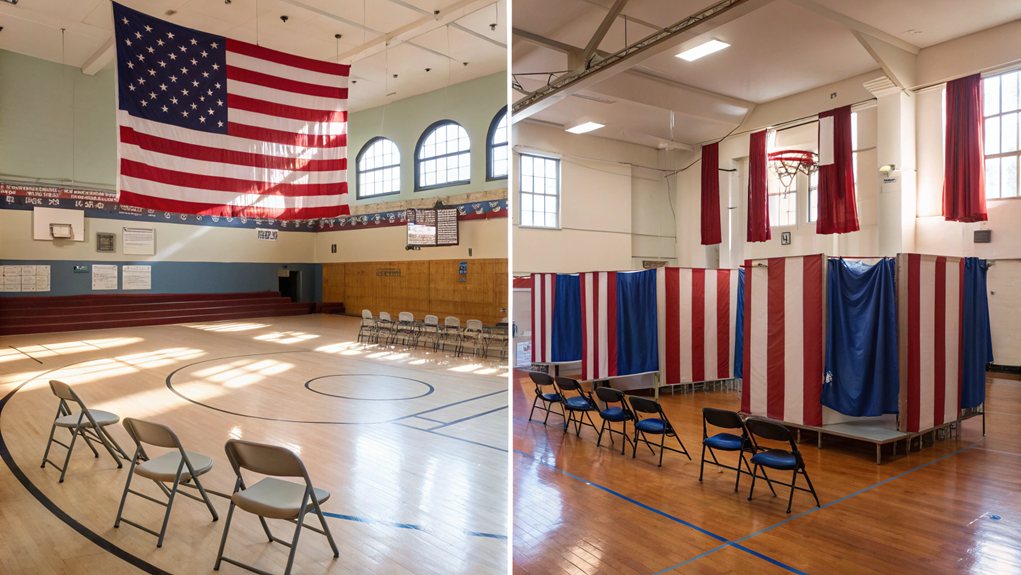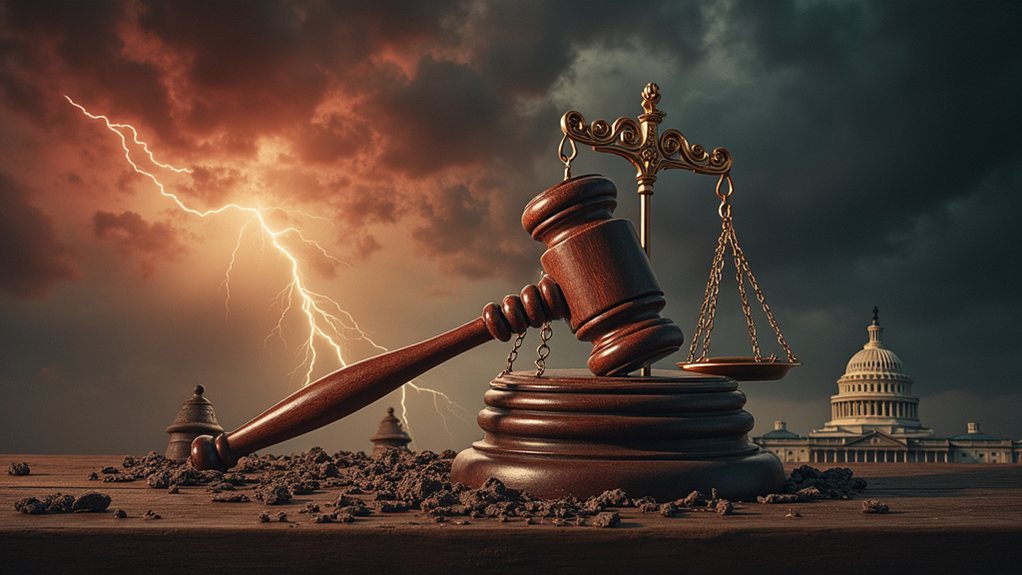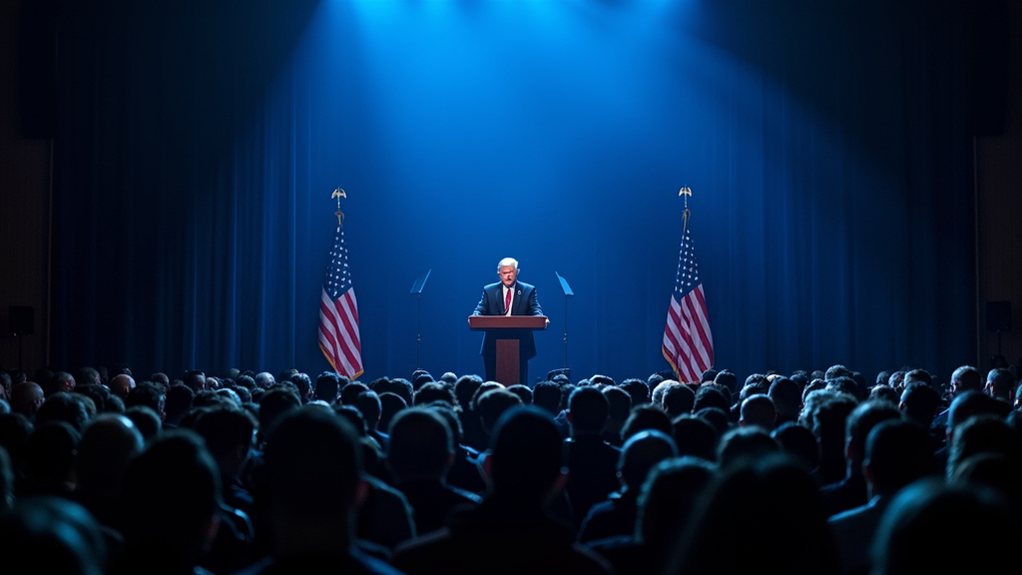Congressional redistricting and reapportionment happen every ten years, right after the census. It's a big deal because it decides who gets to represent whom in Congress. States play the game differently. Some use independent commissions, while others let politicians redraw their own maps—hello, gerrymandering! It's a messy process, filled with squabbles over fairness and representation. Irregular shapes and packed districts are often the result. Stick around to see how this circus really impacts your vote.
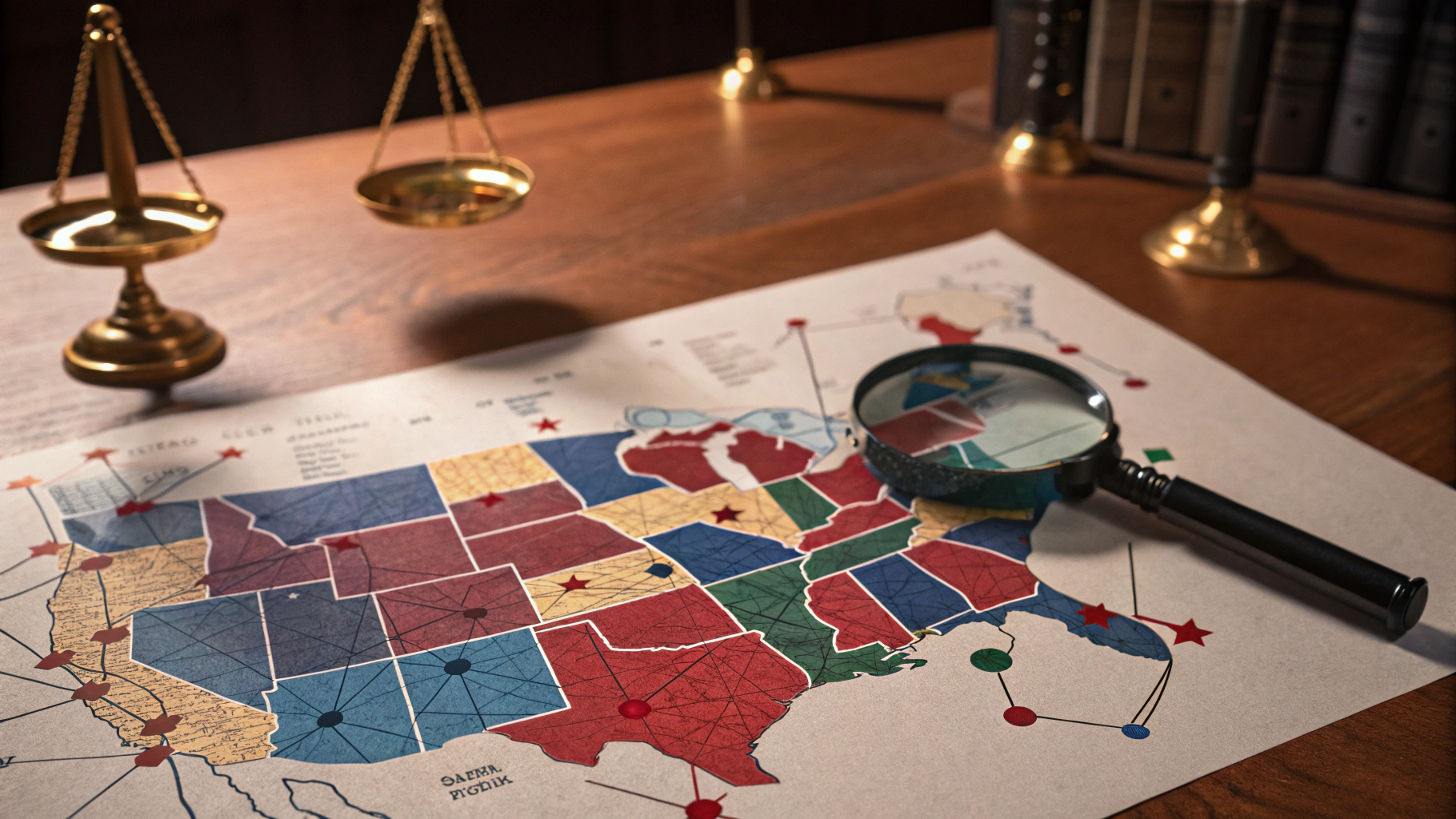
Redistricting: the art of drawing lines on a map that can make or break political careers. It's a game played every ten years after the census. The purpose? To guarantee each district isn't a crowded mess of voters. Equal population, fair representation—simple, right? Well, not quite.
State legislatures usually handle this tricky business, though some states have smartly opted for independent commissions. That's a fancy way of saying, "Let's keep the politicians out of it." Every decade, as the census rolls in, states get busy redrawing those lines. Sometimes, they can't help themselves and make changes mid-decade. But here's the kicker: they have to follow the legal framework. The Voting Rights Act and the Equal Protection Clause are like the watchdogs of democracy. They guarantee that no one's voting power gets squashed, especially for minorities. In fact, forty-four states with multiple representatives must redistrict after each census to reflect population shifts, which is essential due to reapportionment determining the number of representatives per state.
State legislatures often take the reins, but some states wisely choose independent commissions to sidestep political games.
Districts should be compact, contiguous, and respect communities of interest. You don't want a snake-like district that looks like it's trying to escape a pet store. The influence of political, demographic, and geographic considerations often complicates this process, leading to heated debates and legal challenges.
Now let's talk about independent commissions, which sound great on paper and actually are. Thirteen states have them, including California and Arizona. These commissions aim to cut out the political shenanigans and actually promote fairness. They can propose or finalize district maps, which helps reduce gerrymandering.
Yes, gerrymandering—the ultimate party trick where boundaries are manipulated for political gain, using tactics like "packing" and "cracking." It's a dirty game and everyone knows it, but hey, it's politics.
The redistricting process starts after the decennial census and wraps up within a year. State legislatures often lead the charge, with the possibility of judicial oversight. If a map looks unconstitutional, courts can step in.
It's been this way since the early days of the U.S. and it still raises eyebrows. With laws evolving over time, one thing remains clear: redistricting is a cutthroat sport where the stakes are high, and the players are relentless.
Frequently Asked Questions
How Often Does Congressional Redistricting Occur?
Congressional redistricting happens every ten years.
Why? Because the U.S. Census rolls in with its data, and states scramble to redraw those boundaries. Population shifts? Sure, they matter. States can't just sit on their hands, right? They have to adjust for who's where and how many representatives they get.
Of course, it's all fun and games until gerrymandering rears its ugly head. But hey, that's politics for you. Buckle up!
Who Is Responsible for Drawing Congressional District Lines?
So, who draws the congressional district lines?
Well, it's mostly state legislatures calling the shots.
Yeah, they get to pass their own plans like any other law.
But wait! Governors can throw a wrench in that with a veto.
Some states even have backup commissions, just in case the legislature can't get its act together.
It's like a game of musical chairs, but with political boundaries.
Fun, right?
What Factors Influence Redistricting Decisions?
Redistricting decisions? Oh, it's a messy game.
You've got population equality—hello, "one person, one vote." Then there's the Voting Rights Act, making sure no one's voice gets drowned out.
States throw in their own twists: partisan gerrymandering, independent commissions, and community interests.
And yes, courts are watching closely, making sure nobody plays dirty. Toss in some public input, and you've got a recipe for chaos. Fun, right?
Can Citizens Challenge Redistricting Maps?
Citizens can absolutely challenge redistricting maps. It's not just a suggestion; it's their right. They can file lawsuits if they think the maps are unfair or violate laws.
Think of it as a legal tug-of-war. Courts can step in and redraw maps if the ones on the table are a hot mess. In fact, over 111 lawsuits popped up after the last census.
How Does Redistricting Affect Local Elections?
Redistricting can totally shake up local elections. When district lines get drawn, it decides who gets a say in choosing their leaders. That's huge!
It can turn vibrant communities into fragmented messes, or worse, dilute minority votes and strengthen political parties that don't deserve it.
And let's not forget—sometimes it feels like incumbents are more focused on keeping their jobs than serving the people.
It's a wild game of political chess, with real stakes.
